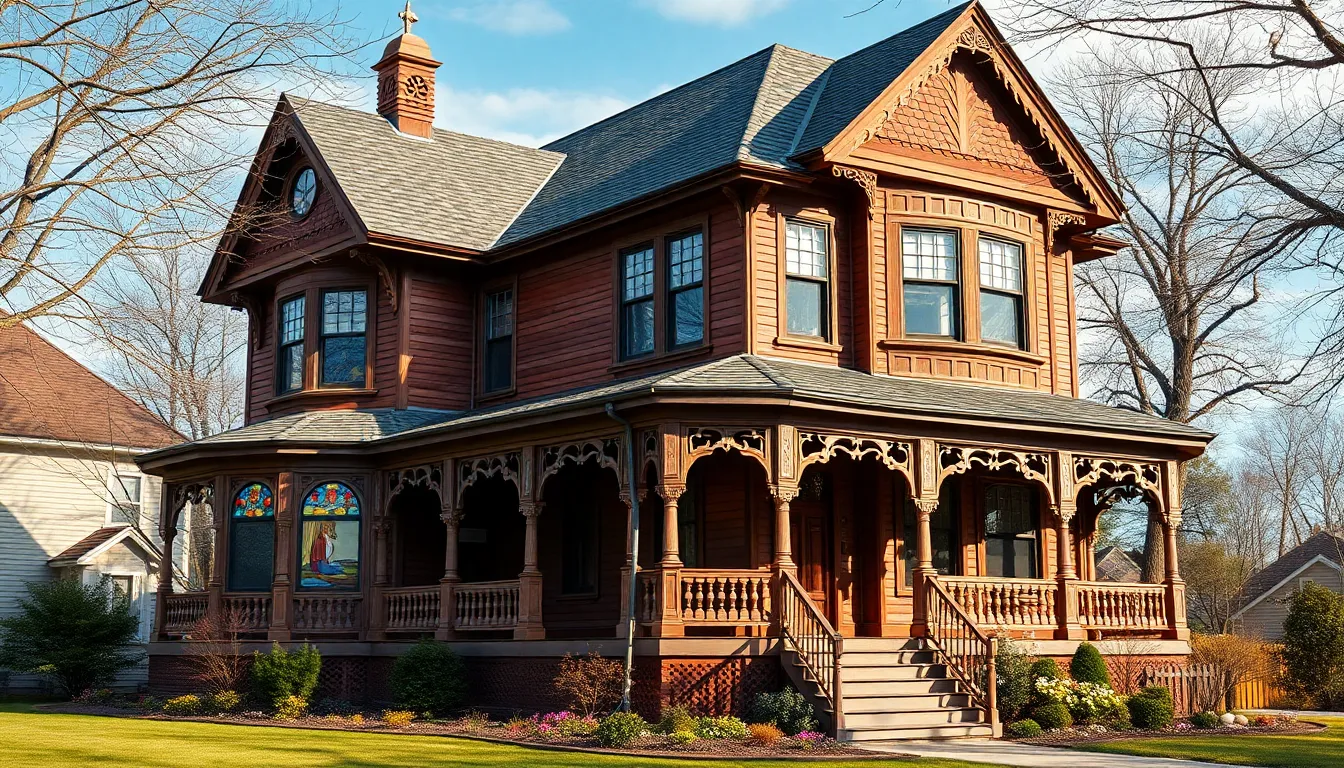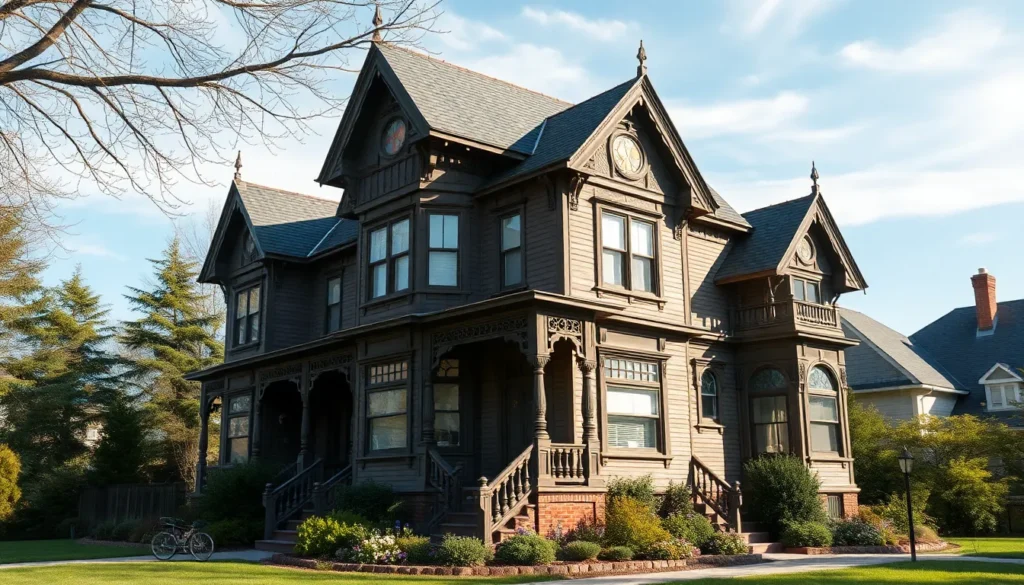Nestled within the heart of a vibrant community, the house once occupied by a Presbyterian minister stands as a testament to faith and history. This charming residence, rich in stories and character, reflects the unique blend of spirituality and everyday life that shaped its past.
Exploring the significance of this home offers a glimpse into the life of a minister dedicated to serving both his congregation and the surrounding neighborhood. From community gatherings to quiet moments of reflection, the house has witnessed countless events that highlight the role of faith in fostering connections among people. As we delve deeper into its history, the legacy of this minister and the impact of his work become increasingly clear, revealing a narrative that continues to resonate today.
Table of Contents
ToggleHistorical Significance of the House
The house previously occupied by a Presbyterian minister serves as a critical landmark, reflecting the minister’s contributions to faith and community engagement. Its history encapsulates significant milestones, events, and individuals who shaped its legacy.
Origins and Early History
The origins of the house date back to the late 19th century, established during a time of religious revival. The minister, known for his commitment to serving both church and community, played a vital role in the neighborhood’s development. Early historical records indicate the house functioned as a meeting place for congregational events and community gatherings, fostering a spirit of unity and camaraderie within the local populace.
Notable Events and Figures
Numerous significant events occurred within the walls of the house. The property hosted charity drives, educational workshops, and social gatherings aimed at uplifting the community. Prominent figures from the congregation, including influential lay leaders and local philanthropists, frequently visited, enhancing the house’s historical importance. The minister’s sermons, often delivered in the home’s parlor, inspired many and cemented his legacy as a pivotal figure in community-building efforts, highlighting how faith transformed lives and strengthened bonds.
Architectural Features

The architectural features of the house occupied by the Presbyterian minister reflect both the era of its construction and the functionality required for communal activities. The design incorporates elements that symbolize faith and service within the community.
Structural Design
The house showcases a Victorian architectural style, characterized by intricate woodwork and high ceilings. Multiple gables create an inviting silhouette, while large windows flood the interior with natural light, creating a warm atmosphere. Spacious rooms facilitate gatherings, with the main hall serving as a focal point for community events. A wraparound porch enhances accessibility and encourages outdoor interaction. The layout includes separate areas for private study and public engagement, emphasizing the dual nature of the minister’s role as both leader and neighbor.
Unique Elements
Distinctive elements define the house’s character. The stained glass windows, often featuring biblical themes, provide both beauty and spiritual significance. Original fireplaces add historical charm, serving as gathering spots during chilly months. Ornate moldings and hardwood floors highlight craftsmanship from the late 19th century. A small backyard garden, cultivated for reflection and prayer, further connects the home to its spiritual roots. Each feature tells a story of faith and community, reflecting the minister’s dedication to fostering connections among residents.
Role in the Community
The house occupied by the Presbyterian minister played an integral role in shaping community dynamics and promoting local culture. Its presence fostered an environment of collaboration and support among residents.
Contributions to Local Culture
The minister’s residence served as a cultural hub, hosting numerous events that enriched the community’s social fabric. Weekly meetings brought together families for prayer, fellowship, and communal meals, reinforcing relationships among neighbors. Seasonal celebrations, such as harvest festivals and Christmas gatherings, highlighted the importance of shared traditions. The house also welcomed local artists and musicians, providing a platform for showcasing talent. This commitment to inclusivity nurtured a vibrant community spirit, underscoring the house’s significance in preserving and promoting local culture.
Educational and Social Impact
The educational initiatives led by the minister further enhanced the community’s social landscape. Sunday school programs for children and Bible study sessions for adults created opportunities for learning and spiritual growth. Workshops addressing social issues, such as health awareness and financial literacy, empowered residents with essential knowledge. The house frequently became a site for outreach efforts, including charitable donations and support groups, addressing various community needs. These educational and social programs solidified the house’s reputation as a center for growth, learning, and compassion within the neighborhood.
Preservation Efforts
Preservation efforts focus on maintaining the historic house occupied by the Presbyterian minister, ensuring its significance and integrity are honored. Various projects aim to restore its architectural features while addressing challenges associated with preservation.
Restoration Projects
Restoration projects undertake the careful repair and maintenance of the house, highlighting its historical and architectural value. Activities include:
- Structural Repairs: Addressing foundational issues and reinforcing support beams to enhance the building’s stability.
- Interior Restoration: Restoring original woodwork and finishes, including moldings and built-in shelving, to reflect the house’s Victorian heritage.
- Stained Glass Preservation: Repairing and cleaning stained glass windows to maintain their vibrancy and historical significance while protecting them from deterioration.
- Landscaping Initiatives: Reviving the backyard garden, adding native plants to create a reflective space and replicate the original design intended for contemplation and prayer.
Challenges Faced
Preservation efforts encounter multiple challenges, complicating the restoration process. These include:
- Funding Limitations: Limited financial resources hinder the scope of restoration projects, making it challenging to carry out extensive repairs.
- Historical Compliance: Adhering to strict preservation guidelines requires specialized knowledge, often resulting in increased costs and extended timelines.
- Weathering Impact: Exposure to severe weather conditions accelerates wear and tear on both structural and aesthetic elements, necessitating frequent maintenance.
- Community Engagement: Fostering interest and participation from the local community remains essential. Engaging diverse stakeholders in preservation discussions can be difficult, impacting long-term support.
These preservation efforts and challenges underscore the importance of maintaining the house’s legacy and the need for ongoing commitment to restore this historic site.
Personal Accounts and Anecdotes
Personal accounts reveal the profound impact the Presbyterian minister and his home had on individuals and families in the community. Stories and memories illustrate how this residence served as a haven for faith and fellowship.
Stories from Former Occupants
Former occupants share vivid memories of their time in the house. Families recall the warmth of gatherings where the minister’s wisdom resonated through discussions on faith and life. Children often remember the excitement of participating in Sunday school sessions hosted in the spacious parlor. Long-time residents recount nights filled with music and laughter, as the house opened its doors to local artists seeking a platform. Such recollections highlight the minister’s ability to create a sense of belonging among diverse groups, fostering lifelong connections.
Community Memories
Community members contribute nostalgic reflections on events held within the house. Many recall charity drives that brought neighbors together, emphasizing solidarity during challenging times. Seasonal celebrations transformed the space into a vibrant hub of joy, with laughter echoing through the halls. Educational workshops provided essential skills and knowledge, empowering attendees to advocate for community needs. These experiences exemplify the lasting influence of the minister’s vision, creating bonds that continue to impact the area long after his departure.
The house once occupied by the Presbyterian minister stands as a testament to the enduring power of faith and community. Its architectural beauty and historical significance reflect a time when connections were forged within its walls. This residence not only served as a home but also as a beacon of hope and unity, nurturing relationships through various gatherings and events.
Preservation efforts are vital to maintaining the legacy of this cherished site. By honoring its history, the community can continue to draw inspiration from the minister’s dedication to service and compassion. The stories shared by former occupants and residents highlight the profound impact this house has had on countless lives, ensuring that its spirit will live on for generations to come.





